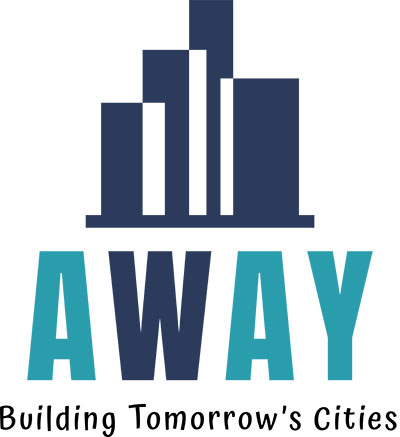Obserbation
Experts from international organizations all agree, “There is an urgent need to tackle carbon emissions from buildings and construction, which account for almost 40% of global greenhouse gas (GHG) emissions[1] . If we broaden the scope, the numbers are even more staggering. Even though urban areas occupy only 2% of the world’s land, they are responsible for more than 70% of global CO2 emissions[2].
Our galloping urbanization (in France, 20,000 to 30,000 hectares of natural, agricultural or forest areas are artificially created each year[3], the equivalent of 2.2 times the surface area of Paris, or 19 million parking spaces) raises questions and brings with it many challenges. It is certainly necessary to respond to the increasing demand for housing, but at the same time, how can we construct new buildings without damaging biodiversity? In fact, “by absorbing and storing carbon dioxide, peatlands, wetlands, soils, forests, and oceans play a vital role in protecting us from climate change. Currently, lands and marine ecosystems absorb about half of the CO2 emissions generated by humans[4]”.
The alarm call from scientists is unequivocal & the latest IPCC reports are indisputable: “We must succeed in reversing the curve of greenhouse gas emissions by 2025 if humanity wants to hope to keep a livable planet. We are truly entering a critical decade and we have only 3 years left to act. The countdown is on and the point of no return for climate change has a date. We need to make colossal and urgent efforts to limit global warming below 2, preferably 1.5 degrees Celsius, above pre-industrial levels.
At the same time, the world of construction and real estate is undergoing a major transformation. The revolution is finally under is way & all players in the sector are now concerned and must be mobilized to change our ways of doing things. Today, the brakes are no longer technological, innovation is already here, and we are seeing more and more projects integrating:
- New design processes: off-site construction; robotization; Building Information Modeling;
- New way of working & governance methods: co-design, consultation, Building information Management
- New construction methods: site conversion, low-carbon materials, bio & geo-sourced materials, recycled & reused materials;
- New technologies : Blockchain, digital twin, Smart Grid & e-mobility, Energy & space management…
Unfortunately, it remains too often at the stage of Proof Of Concept (POC) also called pilot project or innovation project. Deployments are not large enough to make a lasting difference. So, how can we move these “isolated” innovations to a larger scale deployment? How can we massify these initiatives? How can we accelerate this transition, to be on time in 2050?
The objective of this Slow World Tour of Low Carbon Building, which I have named “A WAY – Build Tomorrow’s Cities”, is to do an overview of the situation, so as to have a better understanding of the specificities of the countries studied, to highlight exemplary projects and to promote innovative solutions.
Ambition & Objectives
Today, the obstacles to development are no longer technological. Solutions and innovations exist, even if the level of maturity differs from one technology or country to another. Thus, this project will focus on a strategic analysis so as to have a better understanding of the operation & the factors that can shape the market trends. In other words, what are the factors that can accelerate or slow down the development of the sector? What are the right ingredients to trigger a dynamic and sustainable transformation of the sector? How can we accelerate the transition?
Methods and associated deleverables
To meet the ambitions set, two study methods will be employed for an enriched content:
- Documentary research & case studies to consolidate the lessons learned and establish an initial inventory;
- Interviews with experts to validate and compare these assessments. So as to have complementary point of views, several profiles and interviews will be conducted:
- “Thinkers”:e those who think about the city. Public authorities and players in the research who have a strategic vision. They determine and lead political action.
- The “Doers”: i.e. those who make the city. The players in the construction sector who have a more operational vision. They shape the city of tomorrow.
At this stage, several deliverables are imagined:
- On an international scale: a mapping of the players to identify the key players & understand their scope of action;
- At the national level: a market trend sheet to facilitate the understanding of the various markets;
- At the project level: case studies to collect feedback;
- At the solutions scale: a book of innovations to promote sustainable and responsible solutions.
At the end of this study, a comparative analysis will be carried out to identify best practices within the sector.
Geographic scope
12 countries in total, 4 countries per continent
| Europa | Asia | Africa |
> Netherlands > Denmark > Germany > Italy | > China & Hong-Kong > India > Japan > South Korea | > Morocco > Senegal > Kenya > Rwanda |
[1] UNEP/ CP – “Les émissions du secteur du bâtiment ont atteint un niveau record”
[2] C40Knowledgehub – « Toward a Healthier World: Connecting the dots between climate, air quality and health”
[3] Ministère Français de la transition écologique – « Lutte contre l’artificialisations des sols »
[4] Commission Européenne – ‘Le rôle de la nature dans le changement climatique’

